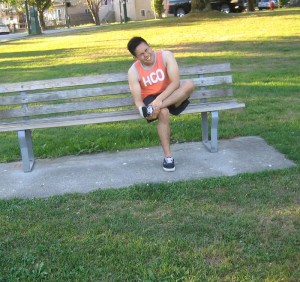Deep heel bruise is the result of miniscule calcium fibers that break apart and these fibers are connected to form bones. When some parts of the fibers are injured, a deep heel bruise will develop which is also called as a periosteal bruise. Take note that this condition develops when the outermost layers of the heel bone which is known as the cortex have tiny breaks which are caused by trauma or repetitive and forceful impact from sports activities and strength training exercises.
Symptoms of deep heel bruise
An initial symptom of deep heel bruise is pain in the heel, usually moderate to severe that can persist for a week or even months. It is difficult for a person to walk or do daily activities. The person experiences inflammation and swelling, oftentimes with accumulation of blood that occurs underneath the skin that encases the heel. There is also discoloration of the skin which happens after the injury along with purplish-blue bruise that develops due to the pooling of blood under the skin.

Causes of heel pain
Pain in the heel happens when there is overstretching of the muscle found at the base of the foot and caused by walking long distances and wearing shoes with poor cushioning and worn out shoes. The tightness that is caused in the calf muscle will put pressure on the heel as the tension spreads down the foot along with an ache in the lower leg above the ankle.
Middle-aged individuals, regular sports player, people engaging in heavy exercises, people who are obese are at a high risk of having deep heel bruise as well as children between 8-12 years of age are also susceptible to this condition. You can learn more about this condition by enrolling in a class on first aid today.
Treatment and home remedies
- Rest the heel bone as much as possible and if there is a need to walk, walk on the ball of the foot and use soft insoles for the shoes for an extra cushioning. When the pain subsides, treat the heel gently for at least a week.
- Massage the heel using an ice pack for a few minutes for several times a day by rubbing the ice pack over the heel in order to minimize pain and swelling. Cold will slow down nerve impulses which may cause spasms.
- Take ibuprofen in order to relieve the pain.
- Prostaglandin is released at the site of an injury and will cause swelling and pain. All you have to do is to raise the leg on a pillow in order to reduce swelling.
- Wear shoes that conform to the shape of the foot and have shock absorbing soles built with supportive borders and heels that are still in good shape. Avoid wearing flat or sandals when suffering from deep heel bruising.
- Eat plenty of vegetables that contain bioflavonoid such as green peppers and broccoli since they help in the healing of a deep heel bruise.
